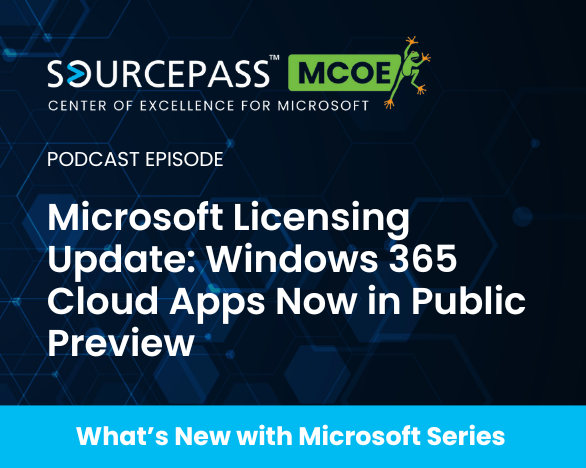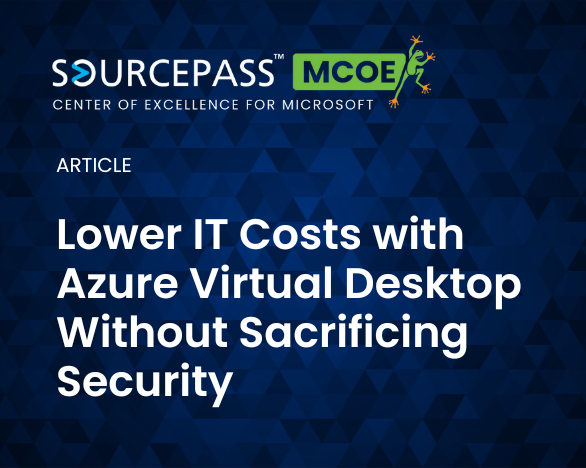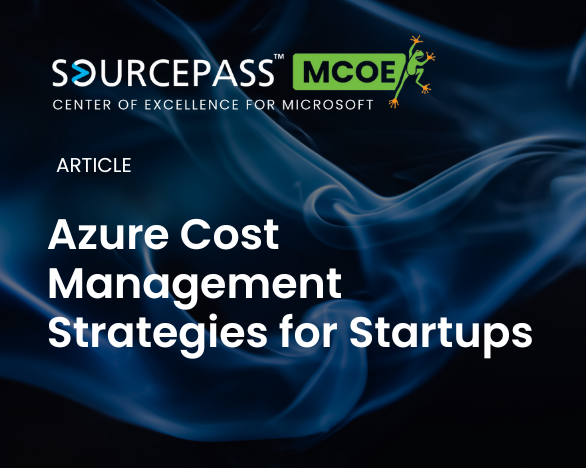7 min read
Microsoft Licensing Update: How Agent 365 Manages & Secures AI Agents
Microsoft Ignite 2025 marked a turning point for organizations seeking practical solutions to manage the rapid growth of AI-powered automation. This...
3 min read
Keri LaRue : Apr 18, 2025 9:00:00 AM
%202.png)
Azure Virtual Desktop (AVD) is an increasingly popular choice for organizations considering cloud-based desktop solutions, but many IT leaders have specific questions before they decide if AVD is the right fit.
To help guide you through the decision process, we’re answering the top 10 questions IT leaders commonly ask about AVD and explaining how a Proof of Concept (PoC) can help you determine whether AVD aligns with your organization’s unique needs.
Azure Virtual Desktop (AVD) is a fully managed desktop and application virtualization service running on Microsoft Azure.
Unlike other virtual desktop solutions, AVD offers a multi-session Windows 10/11 experience, enabling multiple users to share a single virtual machine. This flexibility allows AVD to support a wide variety of use cases, from simple desktop sessions to complex, resource-intensive applications.
Azure Virtual Desktop offers greater flexibility and control over infrastructure, making it ideal for organizations with complex IT needs, while Windows 365 delivers a simpler, fixed-cost experience that’s easier to deploy and manage for smaller teams or standard use cases. [Read More]
Absolutely. AVD is optimized for remote and hybrid work scenarios, providing employees with secure access to corporate resources from anywhere, on any device.
AVD also integrates smoothly with Microsoft 365, ensuring a familiar experience for end-users working remotely or in hybrid settings.
AVD includes several advanced security features, including integration with Azure Active Directory for identity and access management, multi-factor authentication, and role-based access control (RBAC).
It also supports network security through Virtual Networks, encryption for data in transit and at rest, and Microsoft Defender for Endpoint for continuous threat monitoring and protection.
Secure access in Azure means built-in multi-factor authentication, conditional access policies, identity protection, and seamless integration with Microsoft Defender and Sentinel—ensuring users connect safely, no matter where they are.
Since AVD is a cloud-based solution, organizations do not need to maintain physical infrastructure for virtual desktops.
Instead, AVD uses Azure’s infrastructure, allowing organizations to scale resources up or down as needed. However, integration with your existing network and security configurations may require some initial setup, especially if hybrid connections are desired.
AVD licenses are flexible and scalable. Many Microsoft 365 and Windows 10 Enterprise customers are already licensed to use AVD, so adding AVD may not require additional licensing costs.
However, Azure usage costs (for storage, computing, etc.) will apply, which are based on actual usage and can be optimized to control expenses.
Yes—AVD’s consumption-based pricing allows you to scale resources up or down based on demand, helping you optimize costs by only paying for what you use, especially with tools like autoscaling and reserved instances.
AVD offers significant customization, allowing IT admins to configure virtual desktops with specific applications and settings for different user groups. It supports app streaming with MSIX app attach and provides options for single-session or multi-session desktops, giving IT full control over resource allocation and configurations.
AVD is managed through the Azure portal and integrates with Microsoft Endpoint Manager, which simplifies desktop deployment, user access, and application management. Centralized management tools allow IT admins to monitor performance, apply policies, and troubleshoot from a single interface.
Yes, AVD can connect with on-premises infrastructure through hybrid configurations, which allows organizations to integrate AVD with existing networks and directory services. This flexibility makes it easy to incorporate AVD into your current IT environment while still taking advantage of Azure’s cloud capabilities.
One of AVD’s biggest advantages is its ability to scale up or down based on demand. Azure’s auto scale feature enables AVD to automatically adjust resources in real-time, helping to manage workloads efficiently and keeping costs under control.
Sourcepass MCOE helps organizations make the most of Azure Virtual Desktop by aligning technology with real business needs. From assessing your current environment to designing a solution that fits your workforce and budget, our team focuses on helping you create a secure, flexible, and high-performing virtual workspace that supports long-term success.
A well-designed Azure Virtual Desktop environment can boost employee productivity, reduce IT complexity, and strengthen your organization’s security. As a Microsoft Solutions Partner for Infrastructure (Azure), specializing in Azure Virtual Desktop, Sourcepass MCOE helps you achieve these outcomes through strategic planning, tailored implementation, and continuous support that adapts to your evolving needs.
Contact our experts today to explore how AVD can help your teams work smarter, safer, and more efficiently!

7 min read
Microsoft Ignite 2025 marked a turning point for organizations seeking practical solutions to manage the rapid growth of AI-powered automation. This...

8 min read
Microsoft Ignite 2025 set a new direction for organizations navigating the evolving landscape of AI and cloud technology.

6 min read
Microsoft’s Windows 365 Cloud Apps, now available in public preview, introduces a new way for organizations to deliver only the applications users...

In today’s economic climate, IT leaders are under pressure to reduce costs while still delivering secure, seamless access to the tools employees...

Cloud cost management is an ongoing strategic discipline, not a one-time fix. That being said, some simple changes can bring immediate savings. For...

For large organizations, cloud budgeting is not just about cost control; it is about aligning technology investments with long-term business...